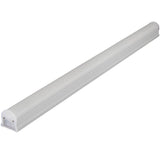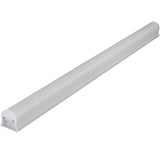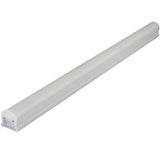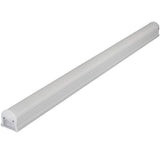Why Businesses May Need a General Lighting Retrofit
Posted by Nick on for ProLampSales
Performing a lighting retrofit is big decision and an even bigger task. Even with direct utility rebates and energy savings, replacing every light bulb (and many fixtures) in a facility is a huge undertaking. Just consider the labor that will be required to complete the job.
That begs the question: does your building need a lighting retrofit at all?
Sure, some lights may be flickering, dim to the point of uselessness, or entirely burn out. That doesn't mean you should jump the gun to replacing every bulb and many ballasts in the building, does it? Of course not.
Retrofitting the lights and fixtures to more energy efficient technology requires a complex evaluation of the economics of the situation, and a walkthrough of the location should be done with an eye towards areas that will require new or better lighting.
Let's look at some lighting problems that may indicate a partial or complete retrofit.
Burnt Out Lamps
The first problem will be lights that have completely gone out. One bulb here, another fixture there, and soon you're talking about dark offices, warehouses that are difficult to navigate, or unsafe parking garages.
The older the lighting technology in use, especially incandescent or halogen bulbs with short life, and the more lamps that are out, the more a retrofit makes sense from an economic and aesthetic perspective.
Low Light Levels
In a previous article, we looked at the problem of replacing bulbs based only on watts, equivalent watts, or lumens. That technique only works when there is already enough light in an area.
In locations where bulbs are in working order but the space lacks sufficient light, either you need to replace existing bulbs with new ones that have higher lumen output (ideally, using less energy), or, think about fixture upgrades. Upgraded light bulbs or fixtures can be combined with rebates and energy savings to improve a building in both energy economics and lighting.
Noisy Ballasts
Older magnetic T12 ballasts that use a magnetic coil are more prone to audible noises than more efficient T8 and electronic ballasts.
If the buzzing occurs in an area few people frequent, it may not be a big deal, but noisy light fixtures in an office setting can negatively impact the work environment.
The best solution to a humming ballast is to replace it, which presents an opportunity to move to more energy efficient technology, whether it is T8 fluorescent tubes, LED T8s, or newer LED flat panels.
Difficult-to-Service Areas
In our warehouse, we have high-bay fixtures with CFL metal halide replacements. Over the years, a few of those bulbs have burnt out, but have not been replaced yet. Why? They're 25 or 30 feet up from the ground, and the time, resources, and labor that would be required to replace them is an impediment.
This illustrates the point that areas requiring special machinery to replace bulbs are prime candidates for retrofitting to longer lasting LED or fluorescent bulbs. Ladder time is reduced, workplace safety is increased, and lighting can be kept consistent with a group relamping project to address these kinds of problems.
Incandescent, Halogen, and CFL
For nearly any general purpose lighting situation, LEDs are now on the market that are direct replacements for common incandescent and halogen bulbs. If a building is still using incandescent or halogen in recessed or track lighting fixtures, significant savings can be realized by switching to LED.
LED bulbs may be a harder retrofit to sell when comparing with existing CFL bulbs. Compact fluorescent technology offers excellent energy efficiency. For example, a 13W CFL produces that same light as a 9W or 10W LED. You're return on investment time-line, based on energy savings alone, does not look as attractive as when replacing incandescent or halogen. However, from a maintenance perspective, LEDs also gain an advantage over CFLs with at least twice the rated bulb life. This translates into fewer bulb changes. Additionally, the energy savings from LED compared to CFL can add up in very large facilities.
Signs & Emergency Lights
Other than indicator lights, signs were one of the first mainstream applications for LED bulbs. However, we still sell some incandescent exit sign replacement lamps, between 10 and 75 watts.
Our LED sign bulbs and LED exit signs range from 1 to 13 watts. The energy savings can be significant compared to alternative light sources because exit signs are generally never turned OFF. LED represents a huge opportunity for long-term energy savings.
Metal Halide Concerns
Color Shift from Metal Halide Lamps
Metal halide color temperature shift is an indication of an older lamp. If the appearance of light coming from the fixtures appears to be a patchwork, it probably means it's time to change all the bulbs. To keep light consistent, group relamping should be considered.Fluorescent Concerns
Fluorescent Flickering or Hard Starts
Flickering fluorescent bulbs are an indication that either the lamps or the ballasts need to be replaced. If multiple fixtures are flickering, group relamping should be considered to keep light levels consistent throughout the area.
Months ago, we wrote a whole article on what causes fluorescent bulbs to flicker. The best solution is prevention, which involves using the correct lamp/ballast combination and following minimum temperature guidelines. In some cases, the cause of striation may be difficult to identify.
Blackened Ends on Fluorescent Lamps
Older fluorescent bulbs can start to exhibit black ends. The old bulbs I pulled out of a fixture in my office had ends that were almost entirely black. No wonder they were starting to fail.
When ballasts power the fluorescent tube, they create emissions, and the emitted material settles on the surface of the lamp. As the material keeps accumulating, the end of the bulb becomes cloudy and black. If enough accumulates, the mercury arc will start to fail, resulting in heavy striation or lamp failure.
- Posted in Retrofits
Featured Products (View All)
0 Comments




